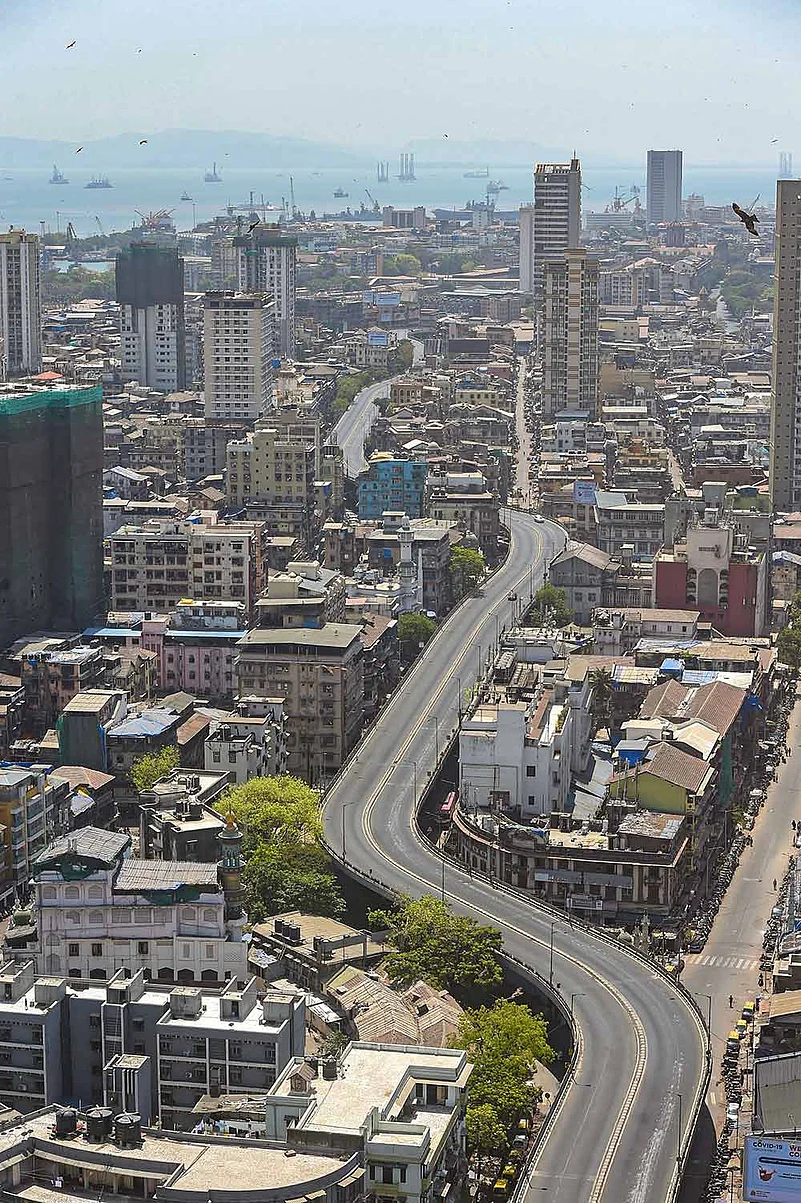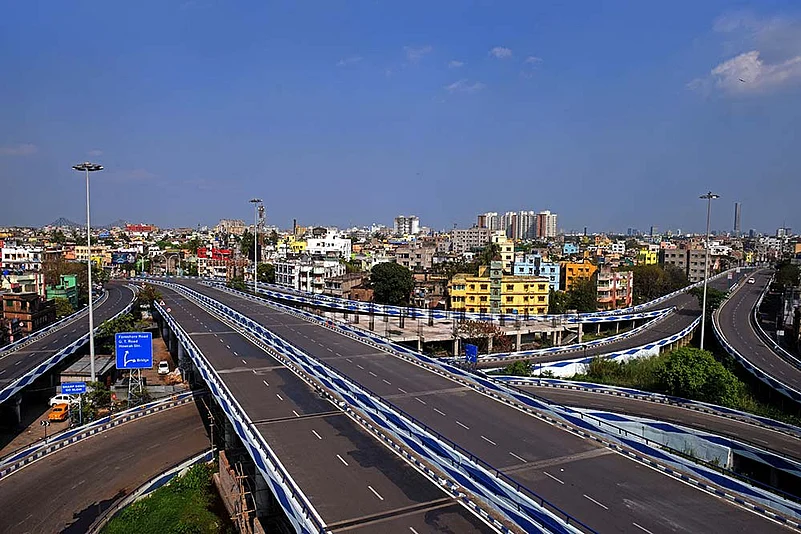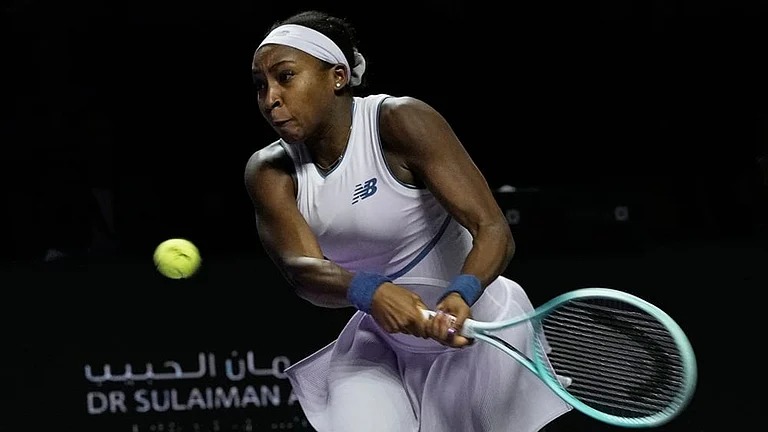It's life itself that is affected, profoundly so and almost at a genetic level. And that means at every other extended level of human experience. Emotional and psychological, to begin with, and from there to what we go about doing with our daily lives. Earning our bread, trying to survive-or thrive.
By March 11, 2020, when the WHO declared COVID-19 as a pandemic, its impact was being felt across the globe, by the 7.8 billion humans living on the planet. With an overwhelming majority of them in no position to help themselves. India has not evolved to a stage where those ratios—of humanity feeling the pain—can be assuaged by the State in any appreciable manner. In an evolving crisis, when no one is able to say for sure when it will be contained and what its long-term impact could be, the stress will be placed unequally on the individual and society, and on the government—which takes the responsibility for anticipating risk and putting in the structural buffers. And the structural risk, which affects everyone, is as economic as it is biological.
India has the recent experience of demonetisation: a sudden, unannounced alteration to our basic economic grammar. Globally, many are drawing parallels with the financial crisis of 2008 and the Great Depression in the 1930s. The present IMF chief, Kristalina Georgieva, is only the second woman to be in that position—at a time when the IMF chief economist too is an Indian woman, Gita Gopinath. Which is appropriate because the effects of most economic crises are unequally borne by women. Our “financial systems are more resilient now,” Georgieva said, to assuage anxieties, comparing it to 2008. But, given that no one is sure how long the crisis will last or unfold, even she found it necessary to say: “Under any scenario, the global growth in 2020 will drop below last year’s level. How far it will fall, and for how long, is difficult to predict, and would depend on the epidemic, but also on the timeliness and effectiveness of our actions.”
India’s internal buffers ensured that it was not too affected by the financial crisis of 2008, even if our GDP growth slipped from 8.5 per cent to 6.5 per cent. But this time, given the pre-existing economic slowdown on which the COVID-19 crisis is acting, the fears are of GDP growth falling below 4 per cent—officially. To put India in perspective, the overall global economic health is itself expected to be hit—especially in countries that depend on exports, tourism and other services sectors, some worse than others.

New Delhi.
There’s one crucial difference, though. The biggest saving grace has been technology—the internet and telecommunication—that is enabling a lot of people to be working around the globe without compromising or running a risk to their own and other people’s health in their pursuit to keep working and the economy ticking.
Still, that’s only a buffer. A lot of our economic life still unfolds offline. That’s why someone like Madan Sabnavis, chief economist at CARE Ratings, feels the impact will be stark: COVID-19 has already affected several nations, including the main drivers of world economy—the US and Europe, China and Japan. “It does look like that growth for 2020 could be in the region of 1 per cent—from the 2.25 per cent expected earlier, going by the way the virus has spread, affecting global output and trade in both goods and services,” says Sabnavis. Going by experience, adds Georgieva, about one-third of the economic losses will be direct costs: from loss of life, workplace closures and quarantines. The remaining two-thirds will be indirect, reflecting a retrenchment in consumer confidence and business behaviour and a tightening in financial markets.
Which means an economic effect enduring way beyond the lockdown, or the immediate health emergency. Demand will suffer as consumers cut spending throughout the year, as even McKinsey agreed in an assessment on March 16. In the most affected sectors, expect higher corporate layoffs and bankruptcies throughout 2020, feeding a self-reinforcing downward spiral. The financial system will suffer significant distress too, but a full-scale banking crisis will most likely be averted because of the strong capitalisation and the macroprudential supervision now in place. (In simple language: don’t run on the banks.) Yet, our fiscal and monetary policy responses may prove insufficient to break the downward spiral. Especially given that the global economic impact is severe, expected to exceed the 2008 crisis on scale. Also expect the GDP to contract significantly in most major economies in 2020, and for any sign of recovery to begin only in Q2 2021—a year from now.
“As a best-case scenario,” says Viswanathan Rajendran, partner, global management consultant Kearney, “a lot of businesses are hoping for a V-shaped economic recovery—a sharp decline, followed by an equally sharp recovery, once restrictions are relaxed.” But there’s a caveat. “One of the scenarios we are looking at is also a much more prolonged slowdown, driven by a longer phase of restrictions.”

Kanpur.
There are studies now that indicate the virus could potentially come back again in communities that have “flattened the curve” and then relaxed restrictions, potentially needing governments to impose multiple waves of lockdowns till a vaccine is discovered. In such a scenario, we are potentially looking at an economic impact lasting for 12-18 months, which is the earliest timeframe expected for a potential vaccine. According to one of the various assessment studies, major European economies will experience dislocations as the virus spreads and countries adopt restrictive responses that curb manufacturing activity at regional hubs, including in northern Italy. The UN projects that foreign direct investment flows could fall between 5 and 15 per cent to their lowest levels since the 2008-2009 global financial crisis.
At the sector levels, tourism and travel-related industries will be among the hardest hit. Also, social forms of consuming art/culture/entertainment. The International Air Transport Association warns that COVID-19 could cost global air carriers between $63 billion and $113 billion in revenue in 2020, and the international film market could lose over $5 billion in lower box-office sales. Thank previous governments for the information connectivity backbone on which you consume content on YouTube and OTT platforms like Netflix and Amazon.
But before clicking the play button on your favourite web series, contemplate the world—and India. Even before this crisis, the global economy had been faced with mounting structural challenges with total global debt reaching $188 trillion at the end of 2018, up by $3 trillion from just 2017. Says Ajay Sahai, director general & CEO at Federation of Indian Exports Organisation (FIEO): “We’re already seeing disruptions in global trade, global economy and Indian exports. As per a rough estimate, roughly 30 per cent of orders have been put on hold. And we expect that 50 per cent of that may not materialise subsequently.” As of now, the situation is extremely bad for labour-intensive sectors because they are heavily dependent on exports to advanced economies of Europe and North America. And both are going through a tough phase. Think leather footwear, apparel, handicraft, carpets…and the countless workers and specialised artisans dependent on it.
The first lockdown order that related to 75 districts had already covered production hubs like Varanasi, Ludhiana, Erode, Chennai and Mumbai among others. But when Prime Minister Modi announced at 8 pm on March 24 that “every state, every district, every lane, every village will be under lockdown” for 21 days, those were words that could affect lifetimes. “This is going to hit the MSMEs in particular as they will be burdened by fixed costs without business, putting a lot of pressure on them. A tough aspect is that they are supposed to pay wages to the workers, who will otherwise be in a difficult situation. I don’t know whether they will have enough liquidity to sail through the crisis,” Sahai told Outlook. The human effect? As NYT reported: “Long lines of migrant wokers streamed out of recently closed railway stations, with thousands of men, almost none wearing masks, marching close together to far-off villages, potentially spreading the virus deep into the countryside.”

Mumbai.
A recent IMF paper projects that the growth decline would be extremely sharp, with a huge rise in global unemployment, an almost 9 per cent expansion, mostly in the informal sector across the globe, more so in developing countries like India. Think millions of daily-wagers, small entrepreneurs, rehriwallahs—sabzi is essential service, but not pakoda, samosa, bhelpuri, chana, bade ka tikka, cut fruit and the hundreds of other things you take for granted. And self-employed carpenters, plumbers, car mechanics, and small shops that would have been buzzing in a week from now with orders to clean ACs, and the rest of it. You, as a member of the elite or middle class, may manage to survive on good WiFi bandwidth and WFH. Down the class pyramid, things will be way more desperate.
Then there’s the formal sector, which gets counted. The biggest challenges here would be for services: aviation, shipping, tourism, hotels, restaurants, travel agency portals et al. In manufacturing, supply chains, especially for auto, electronics, engineering, chemicals, metals, would be affected for sure. Recovery too will be phased out: it will start with services and only then, gradually, move over to the manufacturing sector.
Dr Sachin Chaturvedi, director general at the Research and Information System for Developing Countries (RIS), points to the larger global picture that is emerging. Given the disruption in China, its ability to supply goods is expected to be hit by 2.5-4.7 per cent. And it could get worse if the current situation continues. There are expectations that China could emerge out of all of this only by April 15. Many countries, like the US, Australia and the EU nations, which depended on China for many of their essential supplies, are now pushing domestic industries to help reduce import dependence. India too is looking at improving its own supply lines. That will especially be the case with medical devices and pharmaceutical products, given the new plans for setting up special zones and switching to productivity-linked incentives. So there will be some concentrated buzz there.
But make no mistake. The scenario is particularly challenging for developing countries like India, which do not have efficient public health systems, response capacity or social security. But the seeds of a recovery are always embedded within a crisis. “Looking at the economy globally, this is definitely a strenuous phase and millions of jobs are going to be affected. Nonetheless, history has enough examples to demonstrate that after a time of economic difficulty, industry and countries have always bounced back,” says Prof Janat Shah, director, IIM Udaipur. We need to be prepared for the recovery, and remember the vital lessons learnt, he says, with fundamental changes that need to be made in how we approach health, in India as well as globally. A simple but enduring aphorism from him: “We cannot expect economic growth if public healthcare is kept on the backburner”.

Calling COVID-19 the biggest global issue after the Great Depression, with all of 165 countries affected, N.R. Bhanumurthy, professor at the National Institute of Public Finance and Policy, points out that the impacts on both the global and Indian economy are still evolving. Only the disruptions have started, he says, and at this stage it is going to be very difficult to predict anything very concretely about the future. Much depends on how long the crisis stretches. Even the usual data-backed analysis is cramped for space, and we will need to wait for future economic historians for a final tally. At the present moment, “this crisis is disturbing how all the economic activity is conducted,” says Bhanumurthy. “The impact is going to be across the board. Now we have to wait and watch how the India story is going to play out. We will know only after this lockdown period......”
We will have abundant leisure to count our losses later. Profits? Well, humans have invested in and profited from various forms of social misery. But staying alive and viable in tough times is a natural instinct. An overall economic shock obviously means millions of individual repercussions, many of them drastic: loss of jobs and earnings, and temporary shortages of several products and services. At the same time, the crisis will test, at least in the short and medium term, the ability of individuals to think in terms of savings and investments. Will this bring about a philosophical change in how people approach their lives? If there are interim income losses, will savings and investments rise? And can that make up? At present, the answer to the last one seems to be a huge ‘No’. This is one of those rare, and horrifying, situations when all asset categories are down. Globally, stockmarkets have crashed by a third, or more. Ditto with India. We are already into a real estate slump that has lasted for a few years—2020 was supposed to be the turnaround! After coronavirus, it seems like realty will be down for the next several quarters. The indices will stay at home.
How should investors think about this moment? Well, the extreme volatility in commodities and crude oil can be both helpful and stressful to nations. But for investors, even the professional ones, it is risky as the price swings are huge, and one doesn’t know when the tide may change within a few hours, or because of one event. Everyone initially felt that bullion, or rather gold, would be the safe place to park one’s money. Initially, gold prices zoomed, which indicated the truth of such a belief. However, in the past few weeks, gold prices have come down by 10 per cent. One isn’t sure if it is safe. More importantly, how much gold can one buy? In the following series of articles, we talk about the impact of the coronavirus on different asset categories, as also the investment strategies that can help you safeguard your principal, if not help you earn profits, and also keep your financial head above the turbulent waters. And also, plenty scope to think about the human fundamentals that gird all of that.


























